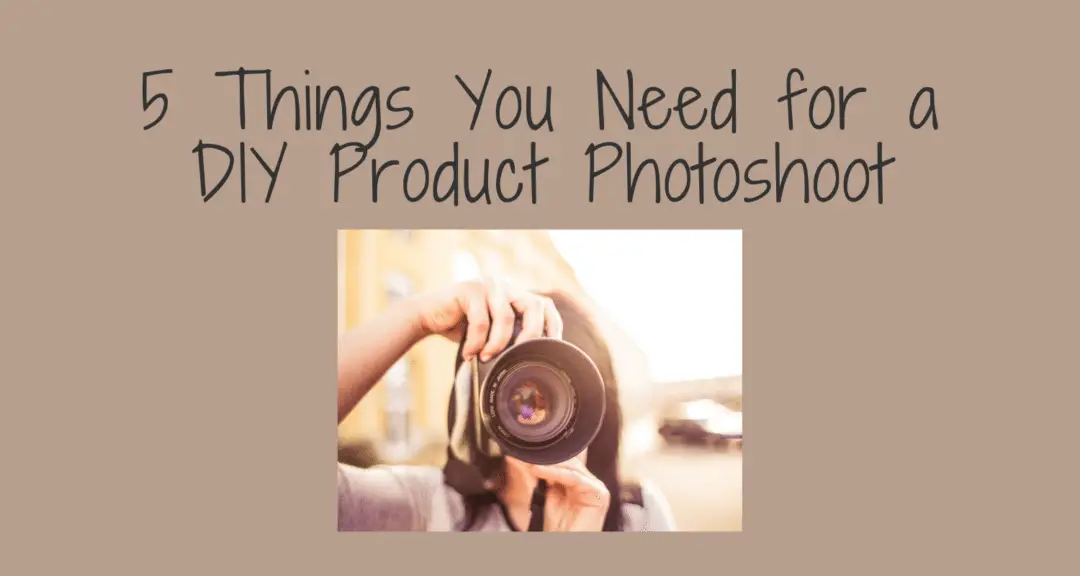
5 Things You Need for a DIY Product Photoshoot
These days, visuals are everything. In social media advertising, businesses need to catch a person’s attention in a matter of seconds. It’s easy to make anything go viral on the internet when a picture looks good. Similarly, it’s fast to catch someone’s attention with a well-taken picture.
With the presence of technology, almost anyone can become a product photographer. Once they have a smartphone with a high-quality camera, they can take pictures that compete with large, heavy camera equipment. They can do it without poking a hole in their pockets, too. Here are things that a DIY product photographer needs:
1. The Backdrop
The backdrop has multiple purposes. It’s supposed to make the product stand out and add dimensions to the picture. Photographers often use a plain background or texture.
The benefit of using a plain background is that the focus is on the product. However, this doesn’t mean that the picture has to be boring or flat. You can use different colored backgrounds to accentuate the product. Color blocking is also an option, as you can create lines and other details to the picture. Use colored papers or a postcard to stay within the budget.
A textural background is a balance between a plain backdrop and a not-so-plain one. You can use a regular ceramic tile you can find at the hardware store. This is a cheap way to have multiple options without exerting so much effort. A brick wall would also be a good background, or if your kitchen backsplash has a bit of texture, that’s great, too.
2. Lighting
The lighting is essential because it makes the product look more natural and defined. Lighting gives shadows to the photo, and shadows add dimension. A flat object could be a bit boring, unappealing, and has a small chance of catching a person’s attention. It also looks unrealistic because, naturally, things have shadows.
If the product is supposed to shine and shimmer, the light will do that, too. For example, if your product is jewelry, you need it to reflect some light. Otherwise, the diamonds won’t look like diamonds, and the finish will look like it has been worn out.
3. Camera Equipment
These days, phone cameras are very advanced. As a result, beginner photographers don’t need to invest in massive cameras to start a project. While beginners are still learning the craft and building their brand, they can use a smartphone in the meantime.
However, a smartphone camera may not give the most flexibility when it comes to settings. A basic DSLR or a mirrorless camera would suffice as an upgrade. At least, these cameras have more settings for camera modes, and the photographer can program everything to their liking. Programming these settings is also good training as photographers advance in their careers.
4. The Subject
Nobody can shoot a product photo without the subject. Here, the presentation of the subject matters. Even though every piece of equipment is in place, the subject should look the most presentable.
Having a model or using props benefits the marketing of the product because they simulate the product in the real world. Potential customers will see how the product could look on them. Props also set a scenario that will tell customers why they need the product.
There are also techniques on how to make a product come alive. For example, a can of soda should look like it’s cold even though it’s not. As a remedy, the photographer can spray a bit of water on the can to make it look like there’s condensation going on.
5. Editing
Before posting or sending the photos to the client, the photos need retouching. You can easily remove imperfections with a few tweaks on software like Adobe Photoshop. Lights and camera settings could make the product appear different in the raw picture. To make the colors sharper and more vibrant, a few more tweaks on photo editing software like Adobe Lightroom should be in place.
Some companies have specialties as to editing. This is because certain products require different degrees of attention. Going back to the jewelry example, jewelry-retouching companies specialize in adding more glimmer, shine, and shimmer to the products. So, if you need help with a picture, it’s best to hire the services of these companies.
Setup Your DIY Studio
Your studio doesn’t have to be an actual studio. It could be your kitchen counter, your desk, or a random corner in your room. As long as you have your backdrop, lighting, camera equipment, the product, and editing software, you’re good to go.



2 Comments
I like the tips really very much as you have covered up the things quite nicely with us. The culture of product photography is gradually increasing and for this, this sort of post will help the businessmen a lot.
Many thanks!
I’m glad you found it helpful.